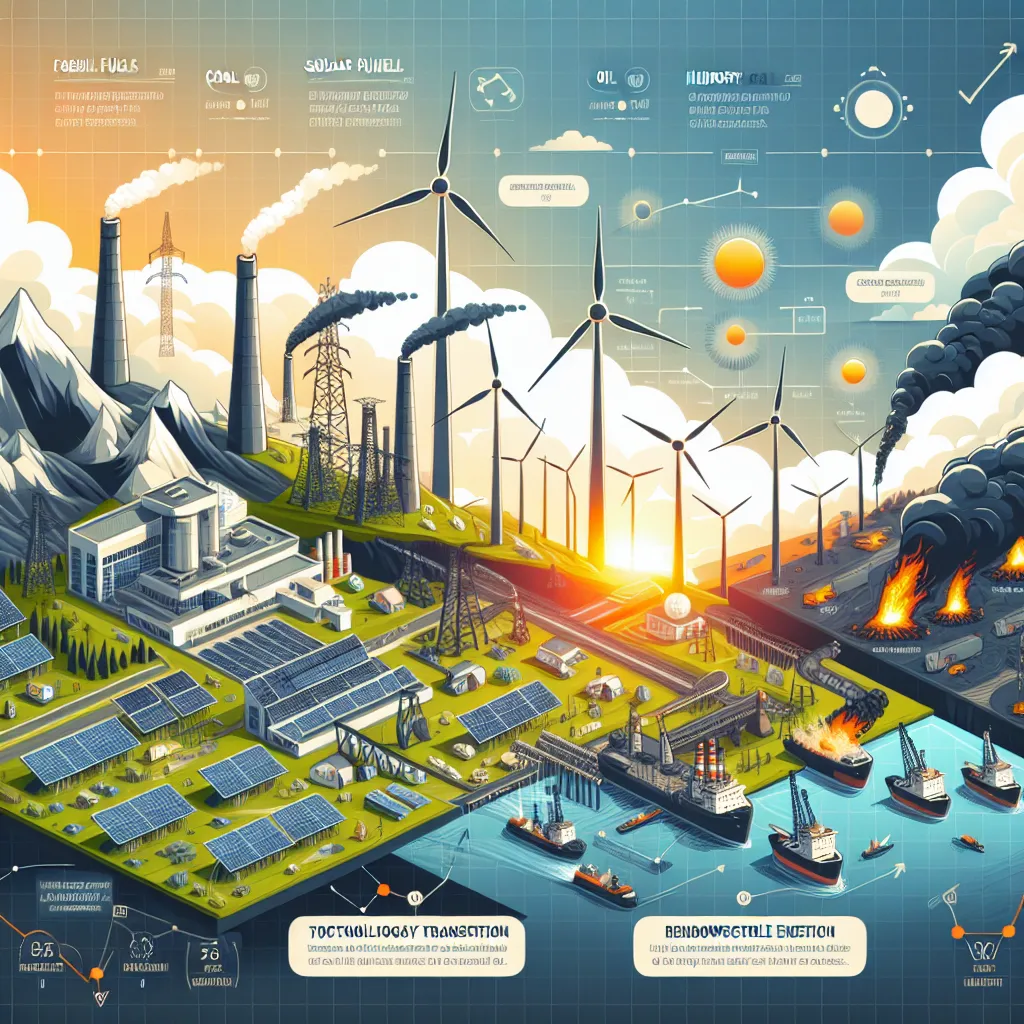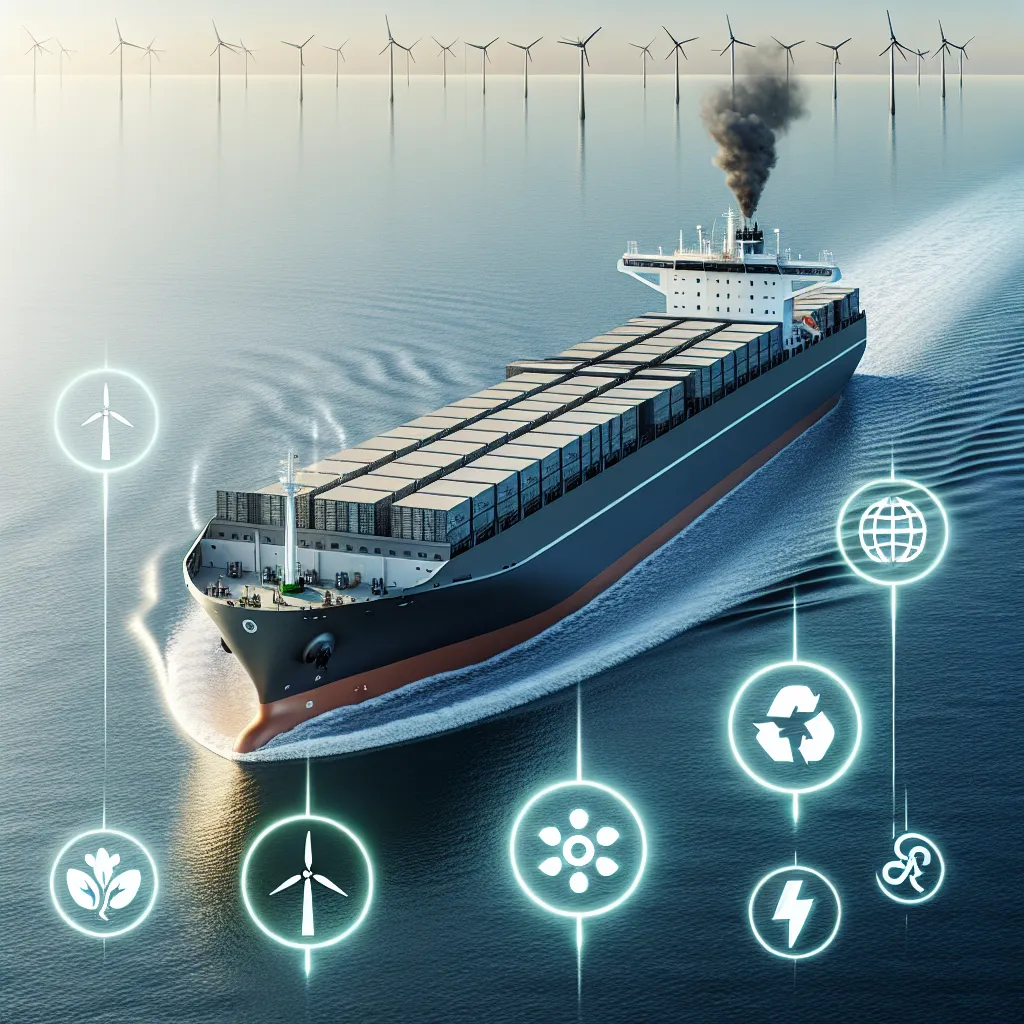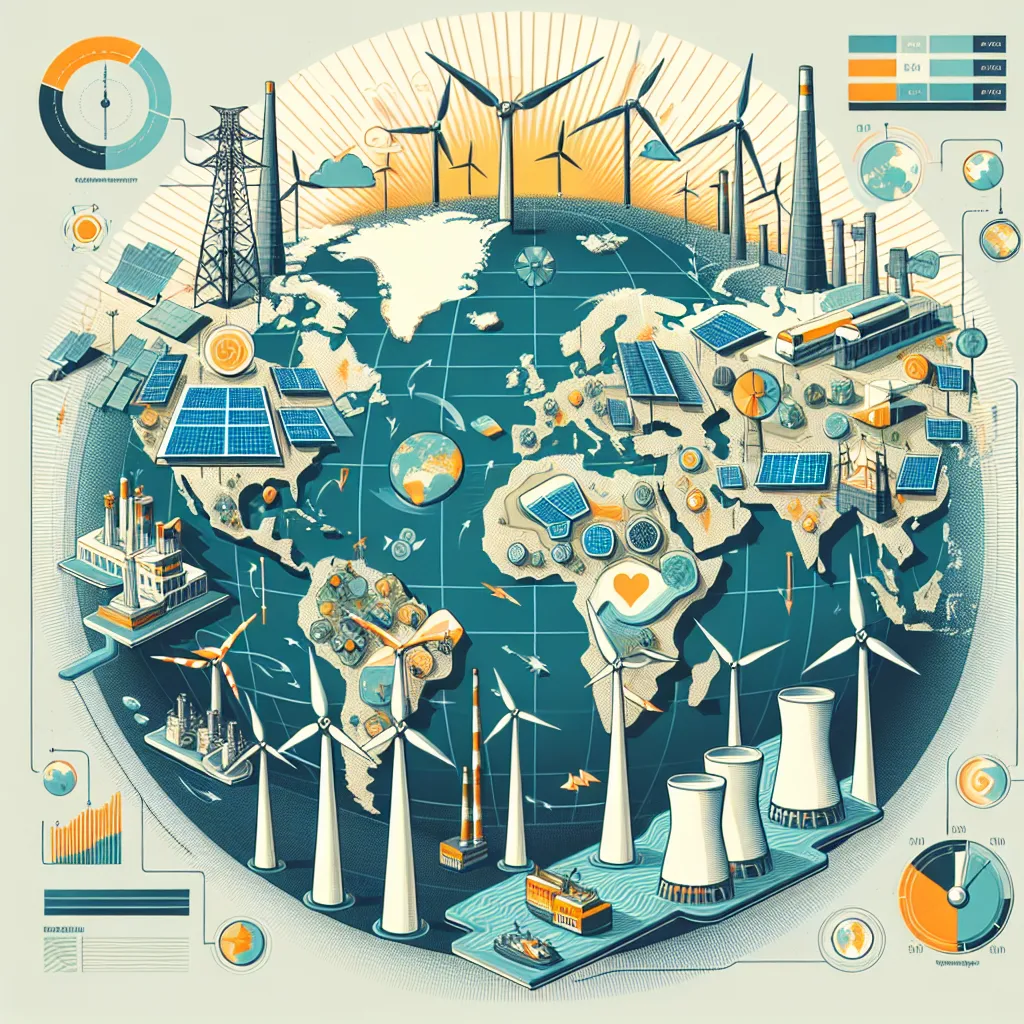As an experienced IELTS instructor, I’m excited to share with you a comprehensive IELTS Reading practice test focused on the topic of renewable energy and its impact on reducing fossil fuel dependency. This practice test will help you improve your reading skills and expand your vocabulary in this important field. Let’s dive into the passages and questions!
 Renewable Energy Transition
Renewable Energy Transition
Passage 1 – Easy Text
The Rise of Renewable Energy
Renewable energy has become an increasingly important topic in recent years as the world seeks to reduce its reliance on fossil fuels. Solar, wind, hydroelectric, and geothermal power are all examples of renewable energy sources that are being harnessed to meet our growing energy needs. Unlike fossil fuels, which are finite and contribute to climate change, renewable energy sources are sustainable and have a much lower environmental impact.
One of the main advantages of renewable energy is its abundance. The sun provides more energy to the Earth in one hour than humanity uses in an entire year. Wind power is also plentiful, with the potential to meet global electricity demand 40 times over. As technology improves and costs decrease, renewable energy is becoming more competitive with traditional fossil fuels.
Many countries are setting ambitious targets for renewable energy adoption. For example, Scotland aims to generate 100% of its electricity from renewable sources by 2020, while Denmark plans to be fossil fuel-free by 2050. These goals are driving innovation and investment in the renewable energy sector, creating new jobs and economic opportunities.
The transition to renewable energy is not without challenges. Intermittency is a concern, as solar and wind power are not constantly available. However, advancements in energy storage technologies, such as improved batteries and pumped hydro storage, are helping to address this issue. Additionally, smart grids are being developed to better manage and distribute renewable energy.
As renewable energy continues to grow, it is playing an increasingly important role in reducing our dependence on fossil fuels. This shift is not only beneficial for the environment but also for energy security and economic stability. The future of energy looks bright as we move towards a cleaner, more sustainable world powered by renewable sources.
Questions 1-5
Do the following statements agree with the information given in the passage?
Write:
TRUE if the statement agrees with the information
FALSE if the statement contradicts the information
NOT GIVEN if there is no information on this
- Renewable energy sources are unlimited and have a lower environmental impact than fossil fuels.
- Solar energy could provide enough power for the world’s annual energy consumption in just one hour.
- All countries have set targets to be completely fossil fuel-free by 2050.
- Intermittency is a problem for renewable energy sources like solar and wind power.
- Smart grids are being developed to completely replace traditional power grids.
Questions 6-10
Complete the sentences below.
Choose NO MORE THAN TWO WORDS from the passage for each answer.
- Renewable energy is becoming more ____ with traditional fossil fuels as technology improves and costs decrease.
- Scotland’s goal is to generate all of its ____ from renewable sources by 2020.
- Denmark plans to be ____ by 2050.
- ____ and pumped hydro storage are helping to address the issue of intermittency in renewable energy.
- The transition to renewable energy is beneficial for the environment, energy security, and ____.
Passage 2 – Medium Text
The Impact of Renewable Energy on Fossil Fuel Dependency
The global energy landscape is undergoing a significant transformation as renewable energy sources increasingly displace fossil fuels. This shift is driven by a combination of technological advancements, economic factors, and environmental concerns. As countries around the world grapple with the challenges of climate change and energy security, the role of renewable energy in reducing fossil fuel dependency has become a crucial area of focus.
One of the most notable impacts of renewable energy growth has been the displacement of coal in electricity generation. In many countries, coal-fired power plants are being decommissioned and replaced with solar and wind farms. For instance, the United Kingdom, once heavily reliant on coal, has seen its coal usage plummet from 40% of electricity generation in 2012 to less than 2% in 2020. This dramatic reduction is largely attributed to the rapid expansion of offshore wind capacity and solar installations.
The transportation sector, traditionally dominated by petroleum-based fuels, is also experiencing a shift towards renewable energy. Electric vehicles (EVs) powered by renewable electricity are gaining market share, reducing the demand for gasoline and diesel. Countries like Norway have taken the lead in this transition, with EVs accounting for over 50% of new car sales in 2020. As battery technology improves and charging infrastructure expands, the impact on oil consumption is expected to grow significantly.
In the industrial sector, renewable energy is making inroads through process electrification and the use of green hydrogen. Industries that have historically relied on fossil fuels for high-temperature processes are exploring alternatives such as electric arc furnaces and hydrogen-based reduction for steel production. These innovations have the potential to substantially reduce the consumption of coal and natural gas in heavy industries.
However, the transition away from fossil fuels is not without challenges. The intermittent nature of solar and wind power requires robust energy storage solutions and grid management systems. Additionally, some sectors, such as aviation and shipping, face technical hurdles in adopting renewable alternatives. Despite these challenges, the overall trend shows a clear reduction in fossil fuel dependency as renewable energy continues to grow.
The economic implications of this shift are profound. As renewable energy becomes more cost-competitive, investments in fossil fuel extraction and infrastructure are becoming increasingly risky. This has led to a phenomenon known as “stranded assets”, where fossil fuel reserves and related infrastructure may lose their economic value before the end of their operational lifetimes. Financial institutions and investors are responding by divesting from fossil fuels and increasing their support for renewable energy projects.
In conclusion, the impact of renewable energy on fossil fuel dependency is multifaceted and far-reaching. From electricity generation to transportation and industrial processes, renewables are steadily eroding the dominance of fossil fuels. While challenges remain, the trajectory is clear: renewable energy is playing a pivotal role in reducing our reliance on fossil fuels and shaping a more sustainable energy future.
Questions 11-14
Choose the correct letter, A, B, C, or D.
-
According to the passage, what is driving the shift towards renewable energy?
A. Technological advancements only
B. Economic factors only
C. Environmental concerns only
D. A combination of technological, economic, and environmental factors -
What has been one of the most significant impacts of renewable energy growth?
A. The complete elimination of coal usage
B. The displacement of coal in electricity generation
C. The closure of all fossil fuel power plants
D. The increase in natural gas consumption -
How is the transportation sector being affected by renewable energy?
A. All new cars sold are now electric vehicles
B. Petroleum-based fuels are no longer used
C. Electric vehicles powered by renewable electricity are gaining market share
D. The demand for gasoline has increased -
What phenomenon is occurring as renewable energy becomes more cost-competitive?
A. Increased investment in fossil fuel extraction
B. The creation of “stranded assets” in the fossil fuel industry
C. A surge in the construction of new coal-fired power plants
D. A decrease in renewable energy project funding
Questions 15-19
Complete the summary below.
Choose NO MORE THAN TWO WORDS from the passage for each answer.
The impact of renewable energy on fossil fuel dependency is evident across various sectors. In electricity generation, coal-fired power plants are being replaced by (15) ____ and wind farms. The transportation sector is seeing a shift towards (16) ____ powered by renewable electricity. In the industrial sector, (17) ____ and the use of green hydrogen are helping to reduce fossil fuel consumption. However, challenges remain, such as the (18) ____ of solar and wind power, which requires robust energy storage solutions. Despite these challenges, the overall trend shows a clear reduction in fossil fuel dependency, with financial institutions increasingly (19) ____ from fossil fuels and supporting renewable energy projects.
Passage 3 – Hard Text
The Multifaceted Impact of Renewable Energy on Fossil Fuel Dependency
The inexorable rise of renewable energy technologies is fundamentally altering the global energy paradigm, precipitating a significant reduction in fossil fuel dependency across multiple sectors. This transition, while fraught with complexities and challenges, is driven by an intricate interplay of technological innovations, economic imperatives, and environmental exigencies. The ramifications of this shift extend far beyond mere energy production, encompassing geopolitical dynamics, economic structures, and societal norms.
In the realm of electricity generation, the ascendancy of renewable sources has been particularly pronounced. Wind and solar photovoltaic technologies have undergone remarkable cost reductions, with the levelized cost of electricity (LCOE) for these technologies now undercutting that of new fossil fuel plants in many regions. This economic shift has catalyzed a proliferation of renewable energy installations, leading to the displacement of conventional thermal power plants. For instance, in the United States, renewable energy sources accounted for 78% of new generating capacity additions in 2020, signaling a decisive shift away from fossil fuel-based generation.
The transportation sector, traditionally a bastion of petroleum dominance, is undergoing a paradigm shift with the advent of electric vehicles (EVs) and the exploration of alternative fuels. The electrification of transport, coupled with the increasing share of renewables in electricity generation, is creating a synergistic effect that amplifies the reduction in fossil fuel consumption. Moreover, the development of green hydrogen as a potential fuel for heavy-duty vehicles and maritime transport presents an additional avenue for diminishing petroleum dependency.
In the industrial sector, which has historically been heavily reliant on fossil fuels for high-temperature processes and as feedstock, renewable energy is making inroads through various pathways. The concept of “electrify everything” is gaining traction, with industries exploring the use of renewable electricity for processes traditionally powered by fossil fuels. Additionally, the emergence of green hydrogen as a reducing agent in steel production and as a feedstock for chemical manufacturing is opening new frontiers in industrial decarbonization.
However, the transition away from fossil fuels is not without its challenges. The intermittent nature of wind and solar power necessitates the development of advanced energy storage technologies and sophisticated grid management systems. The concept of “flexibility” has become central to energy system planning, with a focus on developing a diverse portfolio of dispatchable low-carbon technologies to complement variable renewable sources.
The geopolitical implications of this energy transition are profound. Countries that have historically wielded influence through their control of fossil fuel resources are facing a recalibration of their strategic positions. Conversely, nations rich in renewable resources or at the forefront of clean energy technologies are poised to assume new roles in the global energy landscape. This shift is prompting a reevaluation of international relations and energy security paradigms.
The financial sector is also grappling with the implications of this transition. The concept of “stranded assets” has gained prominence, with investors and financial institutions reassessing their exposure to fossil fuel investments. The increasing divestment movement and the growth of sustainable finance are redirecting capital flows towards renewable energy projects and clean technologies.
Moreover, the renewable energy transition is intertwined with broader societal shifts. The concept of “prosumers” – individuals who both produce and consume energy – is challenging traditional utility models. Community-owned renewable energy projects are fostering a sense of energy democracy and local empowerment. These developments are not merely technical or economic but represent a fundamental reimagining of the relationship between society and energy systems.
In conclusion, the impact of renewable energy on fossil fuel dependency is multifaceted and far-reaching. It encompasses technological, economic, geopolitical, and societal dimensions, heralding a transformation that extends well beyond the energy sector. While challenges remain, the trajectory towards a renewable-dominated energy system appears inexorable, promising a future less dependent on fossil fuels and more aligned with sustainability imperatives.
Questions 20-23
Choose the correct letter, A, B, C, or D.
-
What is the main driver of the transition to renewable energy, according to the passage?
A. Technological innovations alone
B. Economic imperatives alone
C. Environmental exigencies alone
D. A complex interplay of technological, economic, and environmental factors -
How has the cost of wind and solar photovoltaic technologies changed?
A. It has remained stable
B. It has increased slightly
C. It has decreased significantly
D. It has become more expensive than fossil fuels -
What concept is gaining traction in the industrial sector?
A. “Fossil fuel everything”
B. “Electrify everything”
C. “Hydrogen everything”
D. “Nuclear everything” -
What is the concept of “prosumers” challenging?
A. Renewable energy technology
B. Government energy policies
C. Traditional utility models
D. International energy trade
Questions 24-26
Complete the sentences below.
Choose NO MORE THAN TWO WORDS from the passage for each answer.
- The development of green hydrogen presents an additional avenue for reducing ____ dependency in the transportation sector.
- The ____ nature of wind and solar power requires the development of advanced energy storage technologies.
- Countries that have historically controlled fossil fuel resources are facing a ____ of their strategic positions in the global energy landscape.
Questions 27-30
Do the following statements agree with the information given in the passage?
Write:
TRUE if the statement agrees with the information
FALSE if the statement contradicts the information
NOT GIVEN if there is no information on this
- Renewable energy sources accounted for all new generating capacity additions in the United States in 2020.
- The electrification of transport is having no effect on fossil fuel consumption.
- The financial sector is reassessing its exposure to fossil fuel investments due to the concept of “stranded assets”.
- Community-owned renewable energy projects are decreasing local empowerment.
Answer Key
Passage 1
- TRUE
- FALSE
- NOT GIVEN
- TRUE
- NOT GIVEN
- competitive
- electricity
- fossil fuel-free
- Improved batteries
- economic stability
Passage 2
- D
- B
- C
- B
- solar
- electric vehicles
- process electrification
- intermittent nature
- divesting
Passage 3
- D
- C
- B
- C
- petroleum
- intermittent
- recalibration
- FALSE
- FALSE
- TRUE
- FALSE
This IELTS Reading practice test on “How Renewable Energy is Reducing Fossil Fuel Dependency” covers various aspects of the topic, from basic concepts to more complex implications. It’s designed to help you improve your reading skills and expand your vocabulary in this important field. Remember to practice regularly and analyze your performance to identify areas for improvement.
For more practice on related topics, you might find these articles helpful:
- The Role of Public Transportation in Reducing Greenhouse Gases
- Impact of Clean Energy on Global Energy Security
- How Smart Grids are Improving Energy Efficiency
Good luck with your IELTS preparation!


